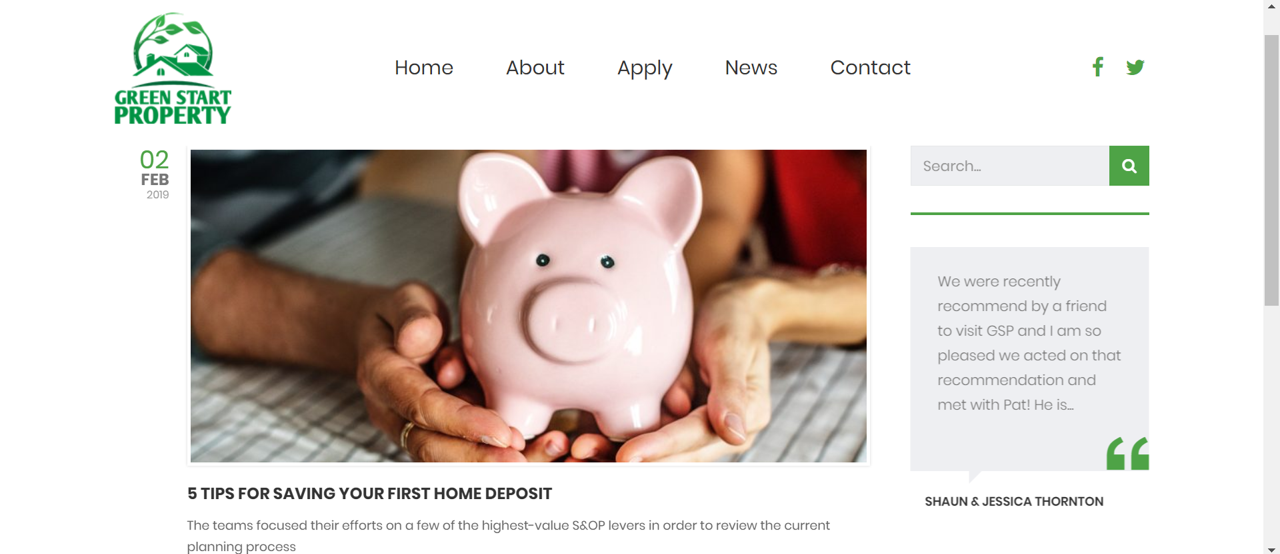
In the digital era, a picture is often what prompts us to click, to read, to share, to comment. That’s why imagery is now one of the most important brand elements.
However, because digital marketing has dramatically impacted the number of images we use, imagery has also become one of the most problematic brand elements.
Think about how hero images (including vector graphics and illustrations) have grown in popularity as headers, backgrounds and landing pages.
Now add to that the secondary images we source each day for social media and blog posts.
Every one of your images – whether it is to appear on the cover of your annual report or beneath a tweet – should convey your brand’s personality, be in harmony with your other brand elements, and create an emotional connection with your audience.
It’s a concept many B2B services brands struggle with.

Here are three examples of how imagery can weaken a brand, and tips to help you avoid making the same mistakes.
1. Your images don’t add context to your content
Unless you’re lucky enough to work for a big company, you probably don’t have access to an established digital library.
So, rather than spend time searching for suitable images, you use the same pictures time and again.
There are two issues here (three if you count the SEO impact):
Firstly, when you use the same image over and over, the image becomes little more than a placeholder. Your audience no longer takes any notice of it. So why bother?
Secondly, repetition negatively impacts engagement.
Take this example from the website of Australian law firm, Holding Redlich. Filter the firm’s content by category – in this case, ‘agribusiness’ – and you’d be forgiven for thinking the website has been hacked. It hasn’t. But rather than selecting an appropriate image for each piece of content, Holding Redlich has settled for the category’s default feature image. It presents as lazy and careless.

And again, though this time I’ve filtered by ‘local government’. This example draws attention to another issue with the Holding Redlich website – the firm is uploading whole newsletters rather than posting each article as a separate piece of content. So whereas in the agribusiness example we could at least see the title of each article, now we only have the date to guide us.

TAKEAWAY
Images should add additional context to your content, not contradict or confuse. Make sure every image you choose is relevant and serves a purpose.
2. Your images are generic, unoriginal, cliches
Most large companies have a budget for commissioned photography and high-quality stock images. Everyone else seems to be downloading the same generic images from the same free photo websites.
These images are not just over-exposed, they’re almost always cliches.
Like this one which we found on the Australian website of global accounting firm Crowe Horwath.

The same image can be found all over the internet, including on a swag of Australian websites such as:
Venture Insights

Green Start Property
Jim’s Fencing

House Search Australia

My Property and Finance

TAKEAWAY
Stock imagery has come a long way in the last number of years – in large part thanks to the sharing economy and the willingness of professional and budding photographers to make their images available at no cost, or low cost. Hence, the challenge is not sourcing images, it is sourcing the right images.
If you rely heavily on stock imagery, at least develop a style that sets you apart from your competitors. And avoid selecting images that are over-exposed, generic or cliches.
3. You don’t have image guidelines (or you ignore them)
Every aspect of your brand should be cohesive. That includes your imagery, too.

Your imagery must harmonise with your brand’s voice, style and personality.How clear and comprehensive are your image guidelines? The more direction you provide, the easier it will be for others to make the right choices.
For example,
- What format of imagery is allowed? Photography? Illustrations? Iconography? Vector images? Video?
- Do you allow studio shots or do you prefer natural lighting?
- What emotions should the images imbue? Happy? Serious? Playful? Mysterious?
- Should your images always feature people? Never include people?
- Do you require a filter to be applied over your images?
- How do you describe the style of your imagery? Is it muted? Bright? Modern? Retro?
- What perspective is specified in your brand guidelines? Aerial photography? Selective focus? Wide angle? Over the shoulder?
Davies Collison Cave is an Australian intellectual property firm so it has expertise in branding. But how well does DCC enforce its own brand standards? A look at the firm’s website gives no indication that it has, or pays attention to, image guidelines.
To illustrate: Look at the sample of photographs below and, in just a few words, describe Davies Collison Cave’s style of imagery.

How did you go? What words did you choose?
We chose inconsistent, emotionless, uninteresting and removed. We hazard a guess these are not words DCC would like associated with its brand.
TAKEAWAY
Your choice of images should reflect your brand’s personality and style.
If you want to build a great visual brand identity, start by defining what your brand imagery should and should not look like. If your image guidelines are inadequate, antiquated, restrictive or difficult to interpret, update them. And then communicate with and educate everyone affected about what’s changed and why.
Imagery is an opportunity to stand out, not blend in, to differentiate. And it doesn’t require a big budget. There’s no shortage of stock images online, starting from no cost to those that are licensed or for editorial use only. Hubspot has curated a tidy list of some of its favourite sites. Your challenge will be finding the sites that contain images that embody your brand and are fit for purpose. Then, get clever about searching, filtering and editing your images so they stick.



